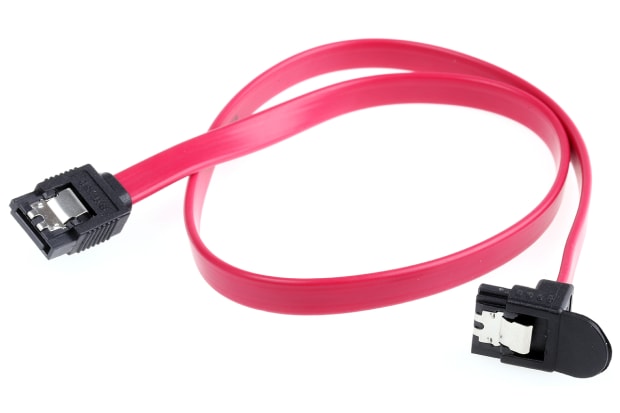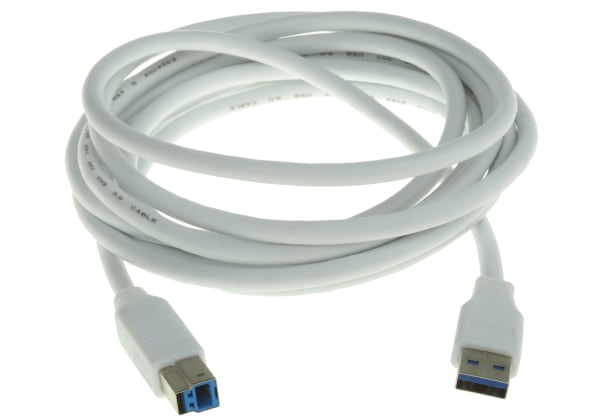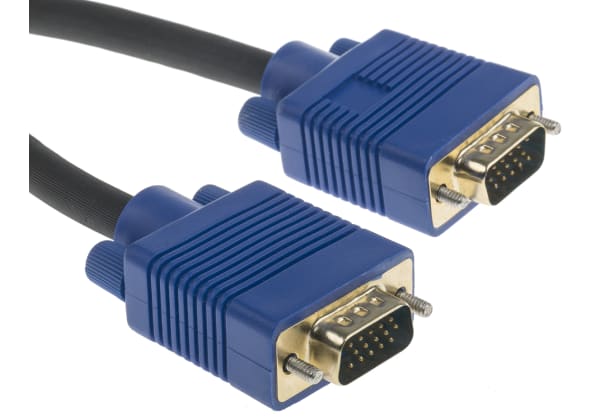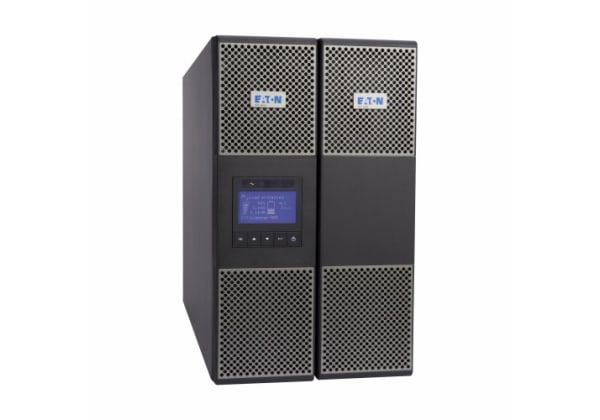- Published 11 Jan 2023
- Last Modified 29 Aug 2023
- 9 min
SATA Cables – A Complete Guide
Our SATA cables guide explains all you need to know about the different types and which is best for your task.

What are SATA Cables?
Serial Advanced Technology Attachment (SATA) or Serial ATA cables are used to connect devices in computer cable assemblies, such as storage devices, for example.
The SATA technology itself is a connecter interface primarily used for computer bus connections in storage applications. In this application, the cables are used to connect a mass storage device (e.g. hard disk drives, optical drives, solid-state memory drives) to a host bus adapter such as a motherboard.
SATA cables can connect a range of devices, including:
- Hard drives
- Optical drives
- Solid-state memory drives
Hot plugging is also possible with supported SATA cables. This process involves adding or removing devices in a computer setup while the system is running. The hot plugging functionality is also useful because it means that operating systems can automatically recognise devices added without needing to perform a full restart.
SATA vs PATA
First introduced in 2001, SATA cables offer a faster data transfer than their predecessor. Please see below for more information on the data transfer rate for the different SATA interfaces:
SATA Interface | Interface Gb/s | Bandwidth Throughput |
|---|---|---|
SATA I | 1.5Gb/s | 150MB/s |
SATA II | 3Gb/s | 300MB/s |
SATA III | 6Gb/s | 600MB/s |
Conversely, Parallel Advanced Technology Attachment (PATA) cables are older and slower, meaning that they are rarely used nowadays.
How to Install a SATA Cable for HDD Applications

Installing SATA cables should not be a complicated task, but it is still important to complete the installation safely and correctly. The exact method of installation will vary depending on the intended purpose of the SATA cable.
If you simply need to replace an HDD, it’s worth noting that it is possible to avoid the need to disconnect the SATA cable from the motherboard. This way, only the SATA cable connector attached to the HDD itself will need to be removed and replaced once the new HDD has been successfully installed.
On the other hand, if you are using a SATA cable to add additional storage to a configuration, you do not need to address the existing hard drive. Instead, you will need to follow these steps:
- Insert the new hard drive into an empty bay in the PC case, ideally with space between the new and existing drives to enable better airflow
- Ensure that the SATA cable connection ports are easily accessible then secure the drive in position
- Connect the SATA cable to the port on the hard drive, then connect the other end of the cable to the motherboard, taking care not to disturb or impede the connection to the existing HDD
- The primary drive should be connected to the motherboard’s lowest SATA port – usually SATA 0 or SATA 1
- Complete the process by ensuring all connections are secure, closing the PC casing, then powering the system up once it is safe to do so
- It may be necessary to format the new drive or potentially reinstall the operating system, depending on the specifics of your application
Understanding how to install a SATA cable for data connection to a motherboard is a little different. These cables feature a latch to prevent accidental disconnection. They also require a low insertion force for connection.

Top Tip!
When working inside a computer tower, it is important to be mindful of electrostatic discharge (ESD). Excess static electricity could potentially cause harm to the delicate components and electronics inside a PC assembly. Protective measures such as the use of ESD grounding wrist straps should be taken to minimise risk.
Types of SATA Cables
There are various different SATA cable types, ranging from varying lengths and connector types to products produced by differing brands. The best SATA cable will ultimately depend on your setup and individual requirements, so it is important to know what is available before you buy SATA cable.
There are two principle SATA cable connector types – power and data. The simplest way to identify the difference between the two types is that data is the smaller of the two (typically 7-pin) whereas power is larger (typically 15-pin).
Mini or micro SATA cables are also available for internal drives and assemblies involving small-form components. A final alternative is the e-SATA cable, which is best suited to outwardly connecting computers or laptops to external peripheral SATA devices such as hard drives.
This table provides a handy explanation of the principal types of SATA cables:
Type of SATA Cable | Definition | Uses and Applications |
|---|---|---|
e-SATA | Cable available in lengths ranging from 0.5-2m | External connection to PCs |
Low Profile SATA | Ultra-thin SATA cables with low profile connectors | Graphics cards |
Micro SATA | SATA data cable | Internal drives and backplane applications |
SATA Bracket | Dual-port e-SATA expansion brackets | Compatibility between computer outputs and e-SATA drives |
SATA Bridge | SATA interface acting as a bridge between devices | Connecting ATA devices to SATA motherboards or PCI cards |
SATA Power | SATA interface power cable | Connecting power adapters, extensions and splitters for SATA power and data cables |
SATA-SATA | Standard SATA cables available in a variety of lengths | Standard SATA applications |
Which SATA Cable to Use
SATA Power Cable Connectors
SATA power cable connectors are the larger of the two, featuring 15-pins. Three pins within the connector work in parallel to supply different voltages (3.3V, 5V, and 12V). Some early versions also offer the dated four-pin Molex connector (the standard used with PATA cables) but most modern SATA power cables simply offer the newer 15-pin connector. The benefits of SATA power cables include increased current capacity and reduced electrical impedance.
SATA Data Cable Connectors
As previously mentioned, SATA data connectors typically feature seven pins – explained in the chart below. In a standard assembly, one end of the cable will be connected to the hard drive, while the other will be connected to the motherboard. SATA data cables are typically small and compact, providing additional space for cooling the system. These data connectors also include differential signalling to reduce the risk of data loss during transfer.
SATA Pinout
The SATA interface has seven pins for data interface. This pinout displays the details for a standard SATA cable:
Pin | Name | Function |
|---|---|---|
1 | GND | Ground |
2 | A+ | Transmit+ |
3 | A- | Transmit- |
4 | GND | Ground |
5 | B- | Receive- |
6 | B+ | Receive+ |
7 | GND | Ground |
SATA to USB Power Cables
SATA cables are ideal for using alongside SSD drives or assisting with laptop data transfer. Utilising increasingly commonplace USB technology, SATA to USB cables are designed to seamlessly work with a variety of PCs, laptops and devices to enable quick and easy usage capabilities. SATA to USB adaptors are also available.
SATA Cable Applications
SATA Power Cables
When it comes to SATA power cables, 15-pole, power and data all have the same pitch of connector pins, but each has a different number of ways.
It is also worth noting that adaptors are generally available for PC power supplies that feature alternative types of power connectors.
SATA Cables for HDDs
In a PC setup, SATA cables can be used to connect the hard disk to the motherboard. Hard disks typically feature multiple inlet ports, at least one of which will be SATA compatible. The SATA cable is also responsible for supplying power to the hard disk so additional hard drive power cables may not be required.
SATA cables are beneficial as their shape has been specifically designed to help maximise airflow inside a CPU, saving space and boosting performance.
It is also worth noting that SATA cables can be used to connect external hard drives to a PC via the e-SATA input. Likewise, it may be possible to connect an external hard drive to a computer using a SATA to USB adapter if the particular hard drive supports USB input.
SATA Cables for Laptops
If you are using a laptop rather than a standard PC, the chances are that the laptop’s storage devices (HDDs, SSDs etc) are attached directly to the motherboard. As a result, a SATA cable should not be necessary. The motherboard and the breakout boards connected to the storage devices are joined with a thin, flat SATA cable specially designed for use in laptop assemblies.
SATA Cables by Length
SATA cable length is generally quite short as these cables are used internally inside PC cases. The maximum length tends to be around one metre. Larger SATA cables are available but these are rarely used because the extra cable length is just not necessary in standard assemblies.
SATA Cable Brands
Many different types of SATA cables are available, including products from some of the leading brands in the industry. Below, we have highlighted some of the key brands offering durable, high-quality SATA cables.
StarTech
StarTech offers a range of SATA cables with varying lengths and connector types available. Browse online today!
Roline
Shop for Roline SATA cables online with RS and discover the ideal product for your requirements.
Molex
Molex SATA cables are high-quality and available in a range of lengths, ways, and connector types. Shop now.
RS Pro
Our in-house brand RS Pro meets the same high standards we expect from our suppliers. Browse our full range online.
FAQs
Can a SATA Cable Affect Speed?
Different types of SATA cable offer different speeds, as detailed below:
- SATA 1: 1.5Gbps
- SATA 2: 3.0Gbps
- SATA 3: 6.0Gbps
However, it is also worth noting that they are all backwards compatible.
Are SATA Cables Still Used?
While modern laptops typically include in-built, purpose-made SATA cables and alternative, faster technologies like PCI Express have since become available, SATA cables are still very much used today. Almost all modern hard drives use the SATA interface and as a general rule, only a few legacy hard drives still use the older PATA interface.
Related Guides
Related links
- StarTech.com Female SATA Data; SATA Power to Male SATA Data; SATA...
- StarTech.com Male SATA Power to Female SATA Power Cable, 6in
- StarTech.com Female Slimline SATA to Male SATA Data; SATA Power...
- Roline Male SATA Data to Male SATA Data Cable, 500mm
- StarTech.com Male LP4 to Female SATA Power Cable, 12in
- A Complete Guide to Hard Drives
- StarTech.com Male LP4 to Female SATA Power Cable, 6in
- Roline USB 3.0 Cable 150mm



